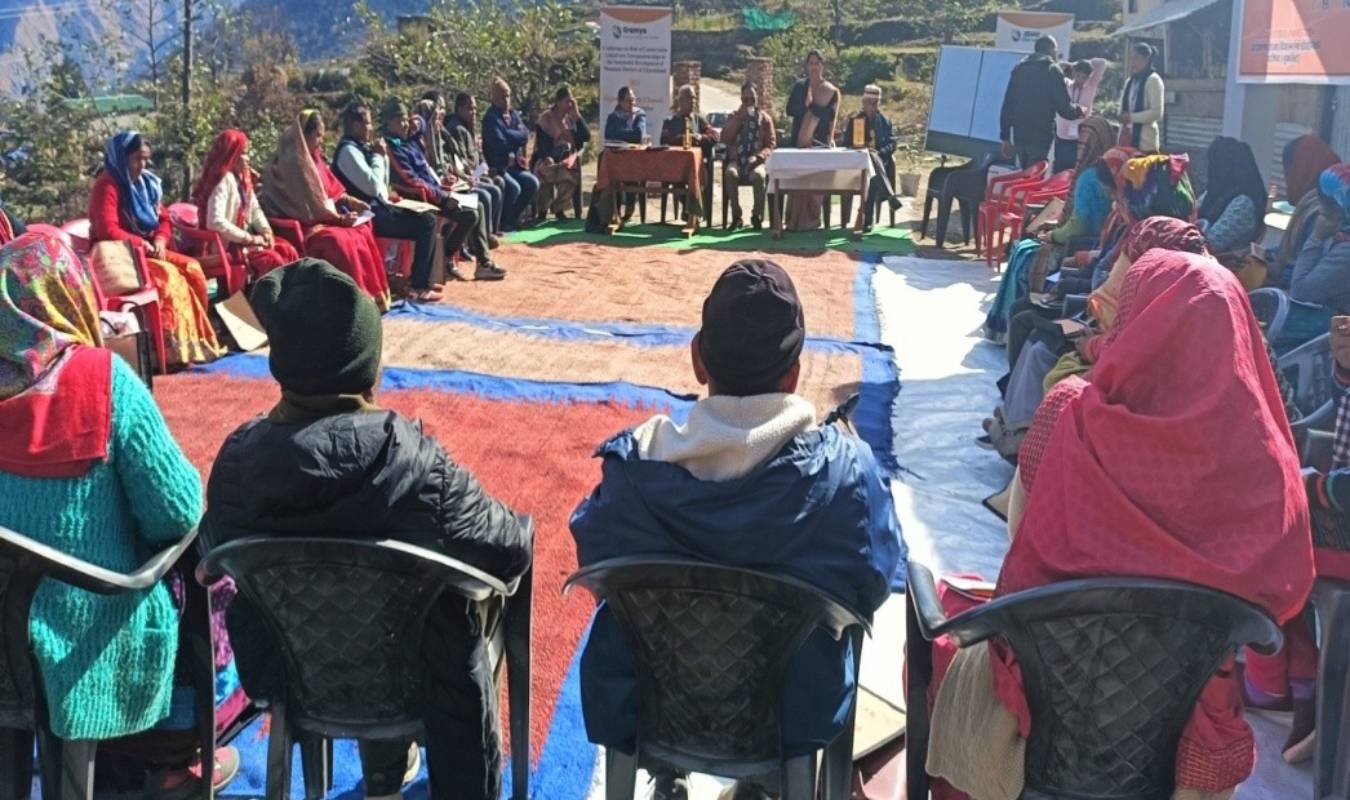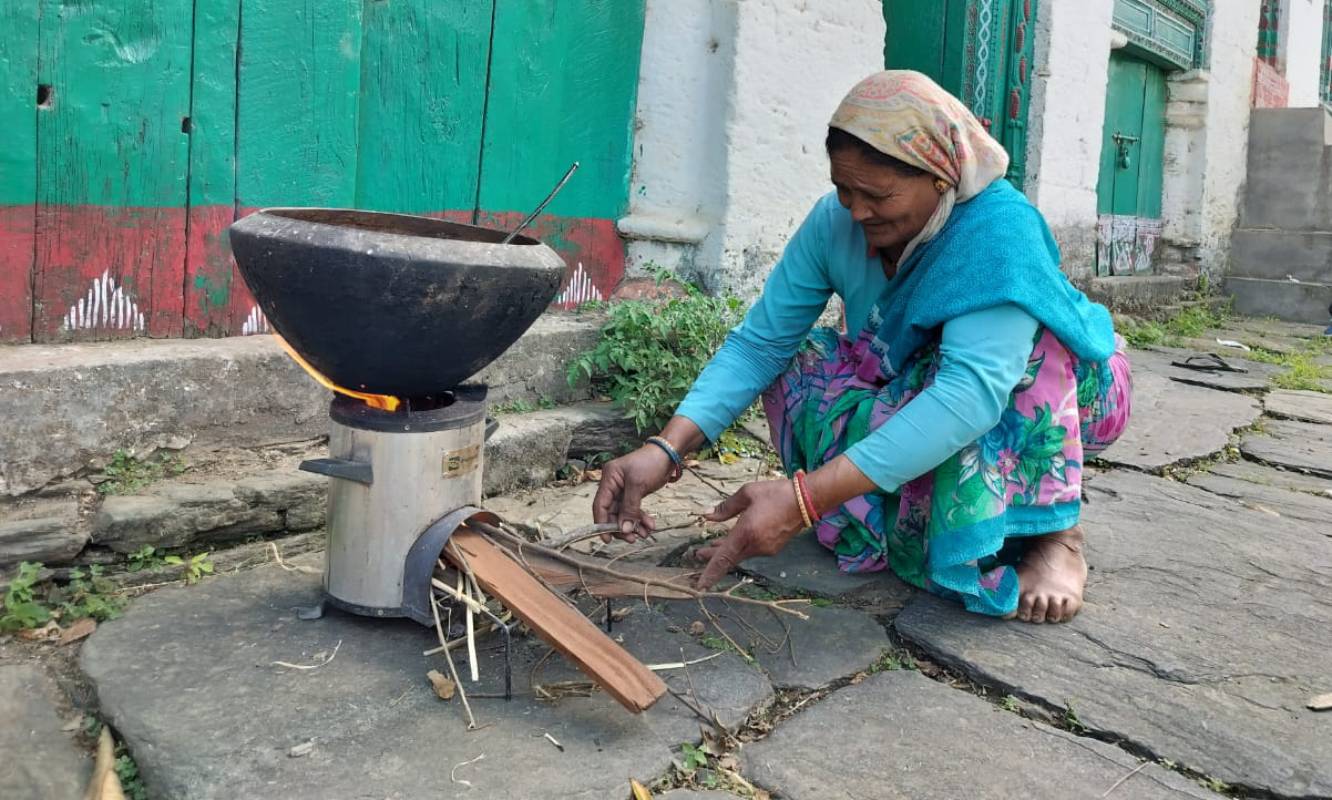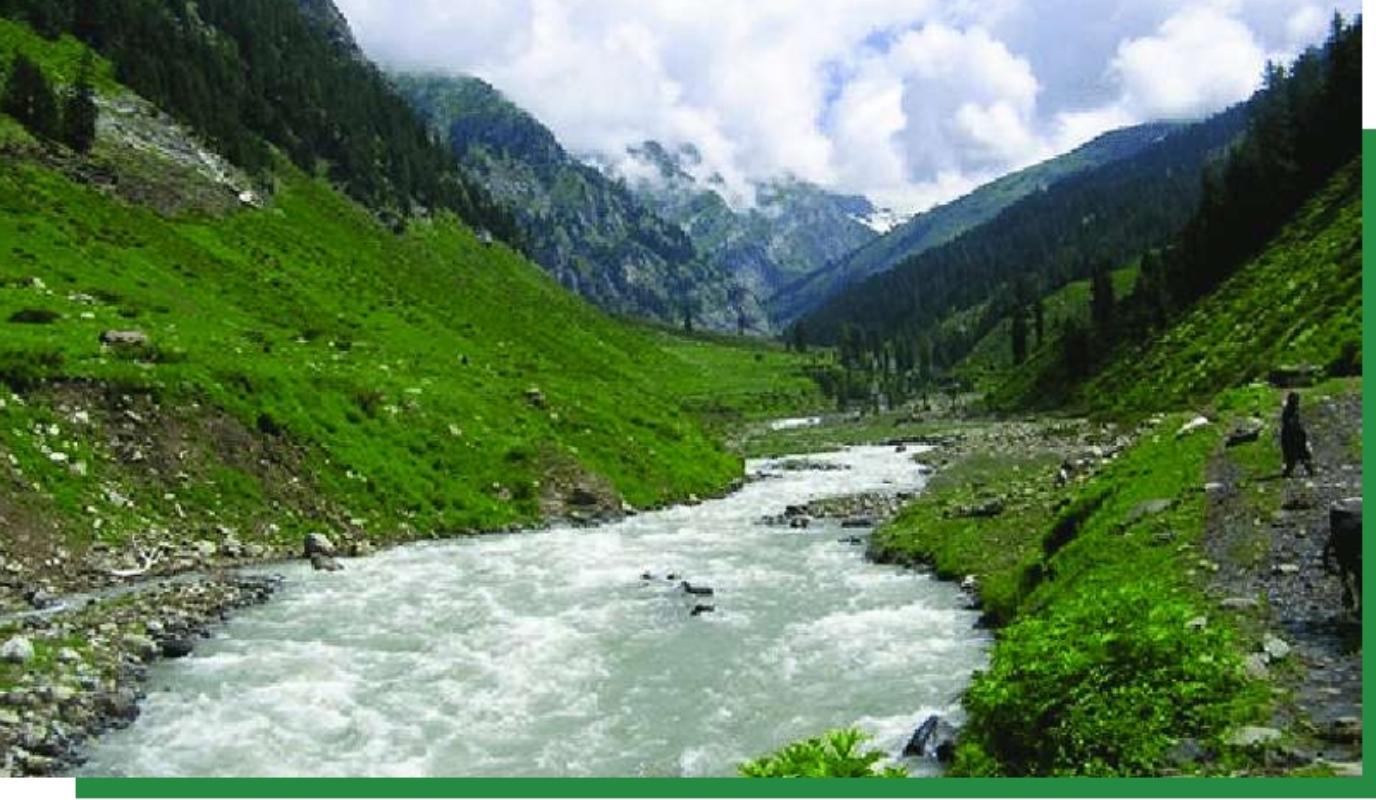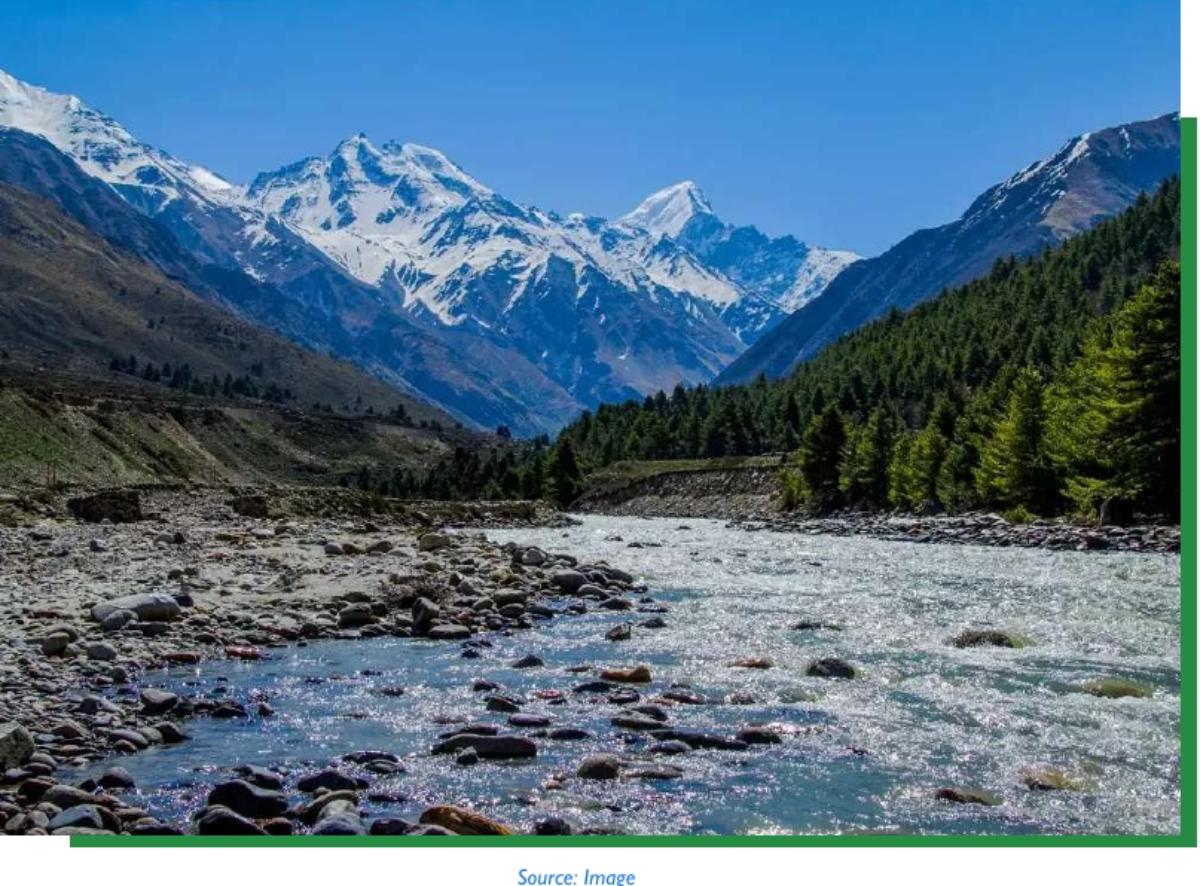Introduction
Traditionally, the subsistence of the Indian Himalayan Region is embedded in the forest conservation such as natural farming, livestock and village industries. However, due to the cumulative effect of a number of factors including degradation of natural capital, climate change, modernized economy and changing aspiration of mountain youth have led to deterioration of these Himalayan economic activities. The challenge today is to revive the culture of conservation linked livelihoods in these mountains and transform them to addresses current market demand and changing aspirations of youth.
While there are very few enterprises in the Indian Himalayan Region, in the last two decades, a number of new conservation linked livelihood initiatives have come up. Many of them are successful and inspiring. The growth of conservation linked entrepreneurships solely depends on promoting and maintaining ecological richness of natural resources on which they are dependent. For example, production of premium organic agricultural products depends on healthy soil, eco-tourism depends on richness of landscape and quality honey production depends on preservation of indigenous honey bees and their habitation. In addition to this these entrepreneurships meet the following targets.
- Proactive efforts to assess local ecology and inbuilt systems in the business to develop and conserve it.
- Conservation of the ecosystem is a collective task, so all these enterprises inherently involve local communities as partners in the business.
With objectives to create entrepreneurship mindset of young aspiring entrepreneurs and motivate them to start and develop conservation linked enterprises using appropriate technology, technique and ecology a three days workshop was conducted in Urgam village of Chamoli district from 14 to 16 December 2023. The Rajiv Gandhi Institute for Contemporary Studies (RGICS) as part of its ECO LABS program in Uttarakhand collaborated with local organization- Gramya Sikshan Paryavran Sanstha (GRAMYA) to organize this workshop entitled ‘Role of Conservation Linked Entrepreneurships in the Sustainable Development of Mountain Districts of Uttarakhand’. The Uttarakhand State Council for Science and Technology (UCOST) provided financial support to organize this workshop. RGICS provided intellectual and knowledge support to local organization to ideate and organize this workshop.
This workshop was attended by 49 micro entrepreneurs from Joshimath, Dasholi and Karnaprayag block of Chamoli district. Of these 30 participants were women and 19 were men. 16 women entrepreneurs who participated in this workshop have started their enterprises through National Rural Livelihood Mission. All of these women entrepreneurs are associated with SHGs and cooperative federations. 15 participants were part of a federation for organic producers promoted by a local NGO- HIMAD SAMITI. Other participants took part in the workshop through our invitation. Micro enterprises started by these participants include poultry, organic production, millet processing, dairy, tourism (home stay and transport) and Mushroom cultivation.
Apart from inauguration and valedictory sessions the workshop organized eight sessions under following four broad themes.
- Entrepreneurship Mindsets
- Significance of Conservation Linked Entrepreneurships in Uttarakhand
- Enterprise Ecosystem for Green Development in Uttarakhand
- Conservation Responsibilities and Value Added Livelihoods
Twenty resource persons from different backgrounds shared their experiences on different topics of the workshop. These resource persons include successful entrepreneurs, NGO leaders, people’s representatives, experts, academicians and government officials. This report briefly summarizes proceedings under above four broad themes of the workshop.
Entrepreneurship Mindset 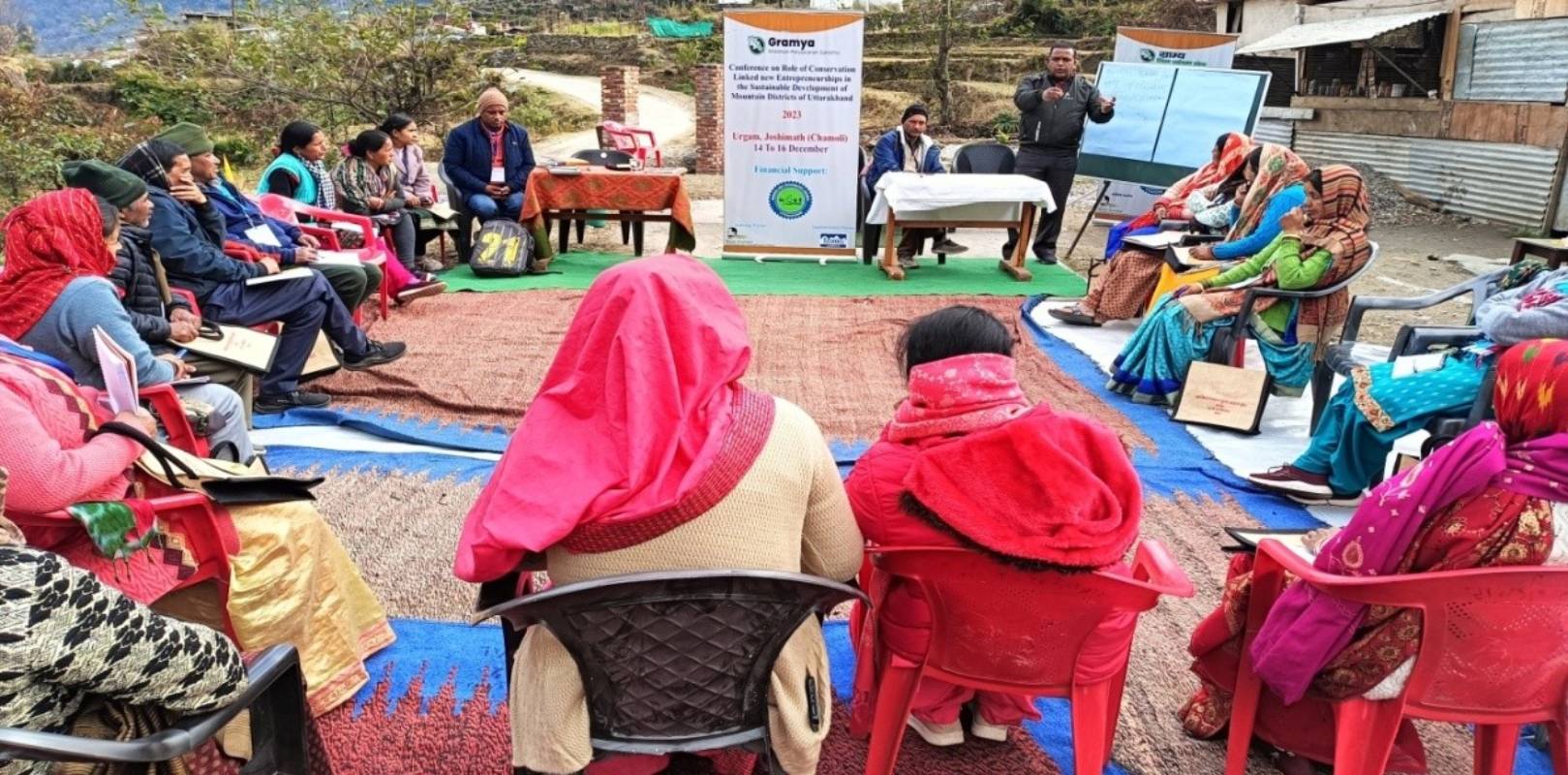 Entrepreneurship mindset is an ability and skill to create new business. These abilities and skills are crucial for any successful business. Development of an enterprising mindset for a micro entrepreneur for whom this workshop was organized is important as most of them have not studied business administration and management. These skills and abilities include critical thinking, problem solving, adaptability, self reliance, future orientation, collaboration, team building, creativity and innovator. This list is not exhaustive as many other abilities and skills develop entrepreneurship personality that leads to creation of new enterprises. In the context of ecologically friendly enterprises the environmental awareness and conservation sensibility also needed to develop this mindset.
Entrepreneurship mindset is an ability and skill to create new business. These abilities and skills are crucial for any successful business. Development of an enterprising mindset for a micro entrepreneur for whom this workshop was organized is important as most of them have not studied business administration and management. These skills and abilities include critical thinking, problem solving, adaptability, self reliance, future orientation, collaboration, team building, creativity and innovator. This list is not exhaustive as many other abilities and skills develop entrepreneurship personality that leads to creation of new enterprises. In the context of ecologically friendly enterprises the environmental awareness and conservation sensibility also needed to develop this mindset.
This session was conducted by Dr. Birendra Aswal, Assistant Professor, Sri Dev Suman Uttarakhand University (Gopeshwar Campus). In his address, Dr. Aswal observed that most of the micro entrepreneurs invited in the workshop are new entrepreneurs but without any formal business studies. He stressed that if we are aware of the basic entrepreneurship mindset, we can grow in our business creation. In his deliberation, he focused on following skills and abilities of an entrepreneur:
- Risk Taking: Aswal argued that an entrepreneur must be a risk taker. Without risk no business can be created. However, he cautioned that as most micro entrepreneurs have limited resources, people must take calculated risk. Take risks which you can comfortably afford.
- Quality of the Product:The quality of the product is the key of any business. You can compete in the market only if your product is competitive in the market in terms of quality.
- Value Addition: Value addition improves and expands our business. Value addition not only makes the product expensive but also increases the shelf life of the product and decreases the volume of the product. He stressed that we must think of value addition in order to expand our business.
- Branding:Branding is yet another way to popularize and reach out to our customers. He said that located in Himalaya we can brand our product in a much better way compared to many other regions.
- Awareness of Government Schemes:There are many government schemes that promote development of enterprises in the state. As an entrepreneur we must be aware about various schemes and policies of the state and central government promoting entrepreneurships. In many cases the government is giving subsidies and other incentives. As micro entrepreneurs, people must take advantage of such schemes to reduce their risk and access larger market facilities provided by the government.
- Marketing-mere production of quality products is not enough. As an entrepreneur, people must also focus on better marketing. For marketing, finishing of product, presentation and packaging play a vital role.
- Funds and Loan-Funding for new entrepreneurs is always a challenge. For micro entrepreneurs it is suggested to not go for market loans. Rather, it is advisable that they should go for subsidised loans or interest free loans.
In this session Mr. Suresh Dimari, Director, Chamoli Zila Sahkari Bank, Mr. Rakesh Gairola, Founder, Subodh Prem Vidya Mandir and Mr. Jeet Singh, Head of Research, RGICS, participated as discussant. Mr. Dimari observed that the cooperatives were introduced in this country to bring cooperation in business. Giving examples of Amul and other successful cooperatives, he argued that working with fellow entrepreneurs is the key to the cooperative movement. He also informed that the Chamoli Zila Sahkari Bank is giving interest free loan for entrepreneur development in the district. Mr. Rakesh Gairola observed that an entrepreneur is not dependent on any other person or institution, rather he or she provides employment to others.
Significance of Conservation Linked Entrepreneurships in Uttarakhand
Conservation linked entrepreneurships identifies and addresses three problems namely ecological, social and economic. Conservation linked entrepreneurships distinct themselves from business as usual. Their growth solely depends on promoting and maintaining ecological richness of natural resources on which they are dependent. For example, production of premium organic agricultural products depends on healthy soil, eco-tourism depends on richness of landscape and quality honey production depends on preservation of indigenous honey bees and their habitation.
This session of the workshop was conducted by Mr. Jeet Singh, Head of Research, RGICS. Participants were given an overview of conservation linked enterprises and their social, ecological and economic significance. With the help of brainstorming with participants, he also explained how most of the entrepreneurs operated by participants related to dairy, poultry, mushrooms, honey and millet production are actually conservation linked enterprises. He further explained 11 different steps to start and operate such enterprises. These steps are as follows:
- Awareness of social and ecological problems- the awareness of social and related ecological problems is the first step to start an enterprise which is linked to ecological conservation.
- Inspiration- the second step is ignition of inspiration to solve the identified social and ecological problem using business as a tool.
- Ideation of Problem and Solution- this step requires conversion of inspiration into development of a business idea to solve the identified social and ecological problems.
- Experimentation, Trial and Error: the fourth step is to experiment with ideas and learn from trial, success and failures.
- Market Determination- market determination for product and service is crucial. We must keep it in mind that our product and services are heavily loaded with good social and environmental causes. We must explore and determine our market, which values these causes.
- Core Team- A team is necessary to build and expand a business. A good and compatible team members can lead to faster and successful growth of a business.
- Initial Funding- funding is required to start the business and operate it. Entrepreneurs may choose grants, low cost loans or interest free loans to meet initial demand of fundings.
- Minimum Viable Product- an entrepreneur must narrow down to a market fit product, which can be easily marketed in the determined market.
- Enterprise Entity- there are a number of organization structures available for business. The founder of an enterprise in consultation with team members has to decide the most appropriate type of organizational structure needed for their business. These structures may include the company, cooperative, NGO or Self Help Group.
- Funding- greater funding is required for the expansion of business, which can be explored once the business has completed all previous nine steps.
- Business Planning and Sustainable Operation- a business owner must be visionary and future oriented. Entrepreneurs must plan the business as per the available resources, funding, raw material to ensure sustainability of the operation.
In this session Mr. Birendra Rawat (Poultry Entrepreneur) and Mr. Laxman Singh Negi, Secretary, JANDESH participated as discussants. Both of these resource persons elaborated the idea of conservation linked entrepreneurships and their social, ecological and economic contribution.
Enterprise Ecosystem for Green Development in Uttarakhand
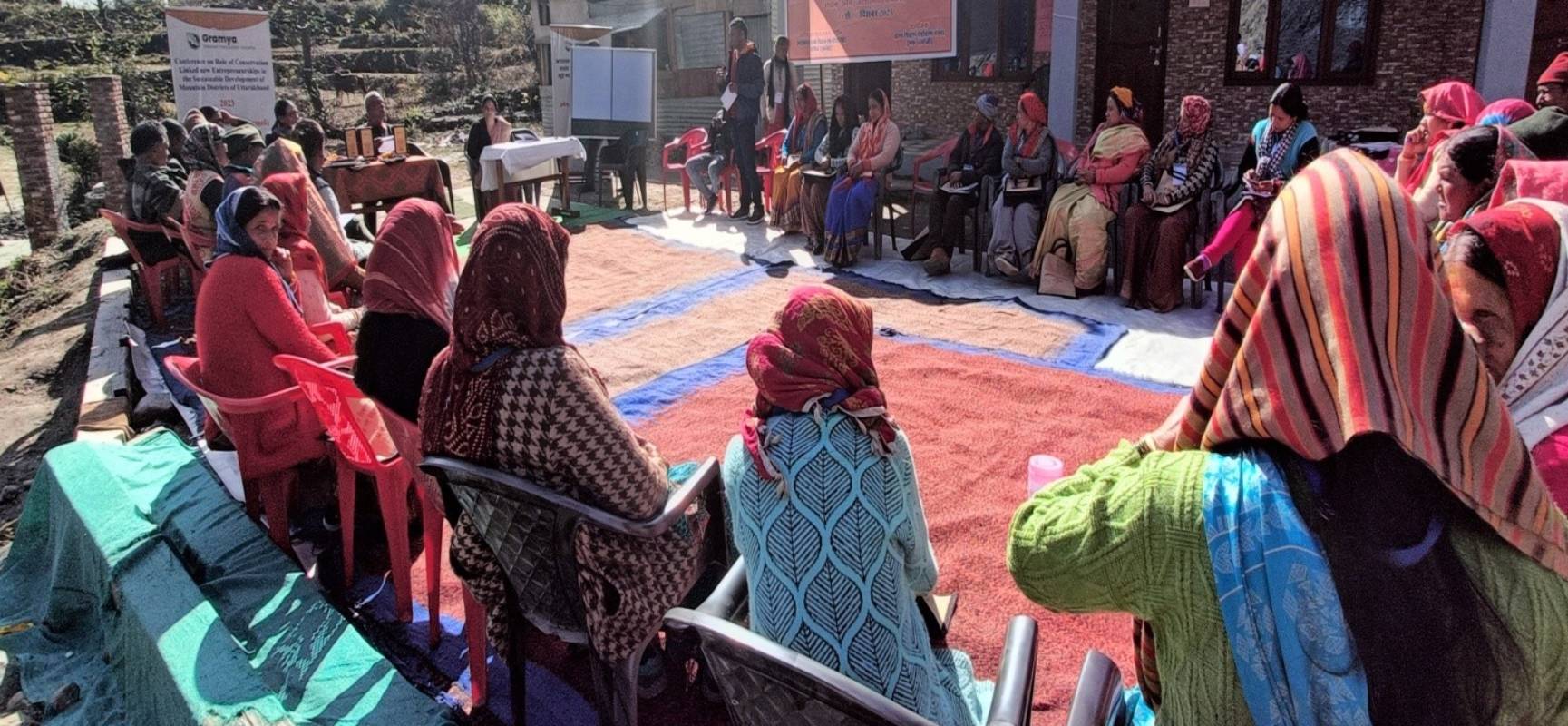
On the second day of the workshop two sessions were organized under the broad theme of ‘Enterprise Ecosystem for Green Development in Uttarakhand’. Under this theme two sessions, one on ‘National Rural Livelihood Mission’ (NRLM) and another on ‘Rural Enterprise Acceleration Project’ (REAP) were organized.
National Rural Livelihood Mission
The Uttarakhand State Rural Livelihood Mission is implementing the National Rural Livelihood Mission in the state to improve economic conditions of poor and rural people by creating economic opportunities and promoting entrepreneurship in the state. Mr. Mohan Negi, Block Mission Manager of NRLM conducted this session by explaining the purpose of the program and how it is structured to support livelihoods of rural poor people in the state. He informed the participants that the NRLM is well designed to provide support for rural people to start economic activities. These supports provided by the program include formation of SHGs, federating different SHGs at village and cluster level, enhancing access to credit, providing grants, offering technical and market services and building capacities and skills of the poor for gainful and sustainable livelihood.
The State Mission is committed to increase the income of women under the project ‘Lakhpati Didi’. The goal is to increase the income of women to one lakh rupees per annum by promoting multiple livelihood options. Under this scheme, the mission is working towards reaching out to about 2.5 lakh households in the state. The program has been working and supporting multiple livelihood options both farm based and non-farm activities. To start micro and mini enterprises, the government is providing grants through SHG federations and low cost loans through banks.
Training and capacity development is another important aspect of the NRLM, under which a variety of skill development training is being offered to women SHG members registered under the program. The mission has collaborated with professional training institutions to impart free of cost training on a number of skills, so that trainees can start their micro enterprises. Mr. Negi informed that the Mission is opening for innovative and new technology based training and entrepreneurships. For example, recently they organized 15 days residential training for women to weave baskets made out of ecologically invasive ‘Lantana’ grass. He further argued that if, lantana basket improves as a business, it solves many social, ecological and economic problems.
Livelihood promotion activities require long term hand holding support especially in rural areas with limited resources and knowledge inflow. The mission is therefore the process of cadre building at local level to sustain the implementation of NRLM. The mission is now providing training to local women called ‘Sakhi’ on different issues such as dairy, poultry, millet processing, food processing, fruit processing etc. These Sakhis will act as local resources for villagers to start and operate micro and mini enterprises.
Towards the end of his deliberation, he also touched upon the village and cluster level organizational set-up of SHGs and their federations. He also explained available financial (loan and grants), technical and market resources available for SHG members. He concluded that the elaborated structure of SHGs creates an effective ecosystem for enterprise development at the grassroots level.
Rural Enterprise Acceleration Project (REAP)
The next session in this theme was on the Rural Enterprise Acceleration Project (REAP) of the Uttarakhand Gramya Vikas Samiti (Government of Uttarakhand). The REAP project commissioned by the state government and funded by the IFAD aims to double the income of rural households. This project is being implemented in collaboration with Uttarakhand State Rural Livelihood Mission. The approach of the project is to build resilience of rural households by diversifying their sources of income. The project is implemented in 95 blocks of 13 districts in Uttarakhand.
Assistant Manager of REAP in Chamoli district Mr. Rajbar Bisht in this session explained the objective, operation and opportunities provided by the REAP for rural entrepreneurs of Uttarakhand. REAP has been working with individuals, SHGs and SHG federation. It provides financial, technical, market and skill support to individual entrepreneurs. Under this project a grant of Rs. 35,000 is being provided to poor women to start a livelihood activity. Moreover, it provides technical and HR support to SHG federation or FPOs to scale up their businesses.
REAP has three major components through which it aims to accelerate rural enterprises in Uttarakhand. The first component is ‘Inclusive Cluster Development’. Under this component efforts are being made to work at cluster levels by diversifying livelihoods and enterprise development. This component also supports organizational development of SHGs and Federations.
The second component of the project is ‘Ecosystem for Enterprise Development’. In this component efforts are being made to provide infrastructure related facilities and market linkages. Attempts are also made to provide financial assistance for the acceleration of rural enterprises. The third component of the project is Project Management and Knowledge Management. Under this scheme services related to project management and knowledge management are offered to rural enterprises for their acceleration.
Poultry entrepreneur Mr. Birendra Singh Rawat and Mr. Umashankar Bisht, Secretary, HIMAD Samiti participated as discussants in these two sessions under the theme of ‘Enterprise Ecosystem for Green Development in Uttarakhand’. Mr. Rawat argued that enterprises are built on local raw material, climate and natural resources. In mountain districts of Uttarakhand, the abundance of natural wealth provides ample scope for conservation linked livelihoods.
Mr. Umashankar argued that the growth of women entrepreneurs associated with SHG federations can be accelerated if women are given exposure, training and opportunities, and also their need for financing is met by banks through the SHG federations.
Conservation Responsibilities and Value Added Livelihoods
Value Added Processing of Sweet Oranges (Malta)
The idea of green growth attempts to explore and economically harness symbiotic relationships between social and ecological systems. Instead of environmental tradeoff this economic approach believes in co-benefits. Two sessions under this theme were conducted on the second day and another two sessions were conducted on the third day of the workshop. The first session under this theme was conducted by Entrepreneur, Innovator and Educationist Mr. Rakesh Gairola. In his deliberation he shared his experience of innovating technologies and enterprises to address local problems.
Mr. Gairola started with his enterprises to address the problem of throwing away market price of sweet orange (malta) in Mandal valley near Gopeshwar town. He explained that the malta was never competitive in the market as easy edible oranges from Nagpur are preferred over it by customers. To address this problem, Mr. Gairola developed technology and machines to process Malta and increase their shelf life in the form of juice and jams. Further he developed technology to utilize flavido of malta to utilize it for cosmetic products. The leftover of malta after extraction of juice is also used as bio enzymes. Today, as an entrepreneur Mr. Gairola is utilizing every part of Malta and profitably running his business by providing employment to 64 people.
Mr. Gairola has further added that his endeavor to develop technologies to sustainably harness the natural wealth motivated him to find solutions for developing enterprises in the sector of lantana oil extraction and restoration of dumping grounds in Uttarakhand.
In his concluding remarks, he added that for an entrepreneur, one must have scientific temperament. A true entrepreneur has the capacity to find a solution to a problem. And finding a solution is Science. Science and technology is crucial for the growth of any business. It helps enterprises to compete in the market.
Responsible Tourism
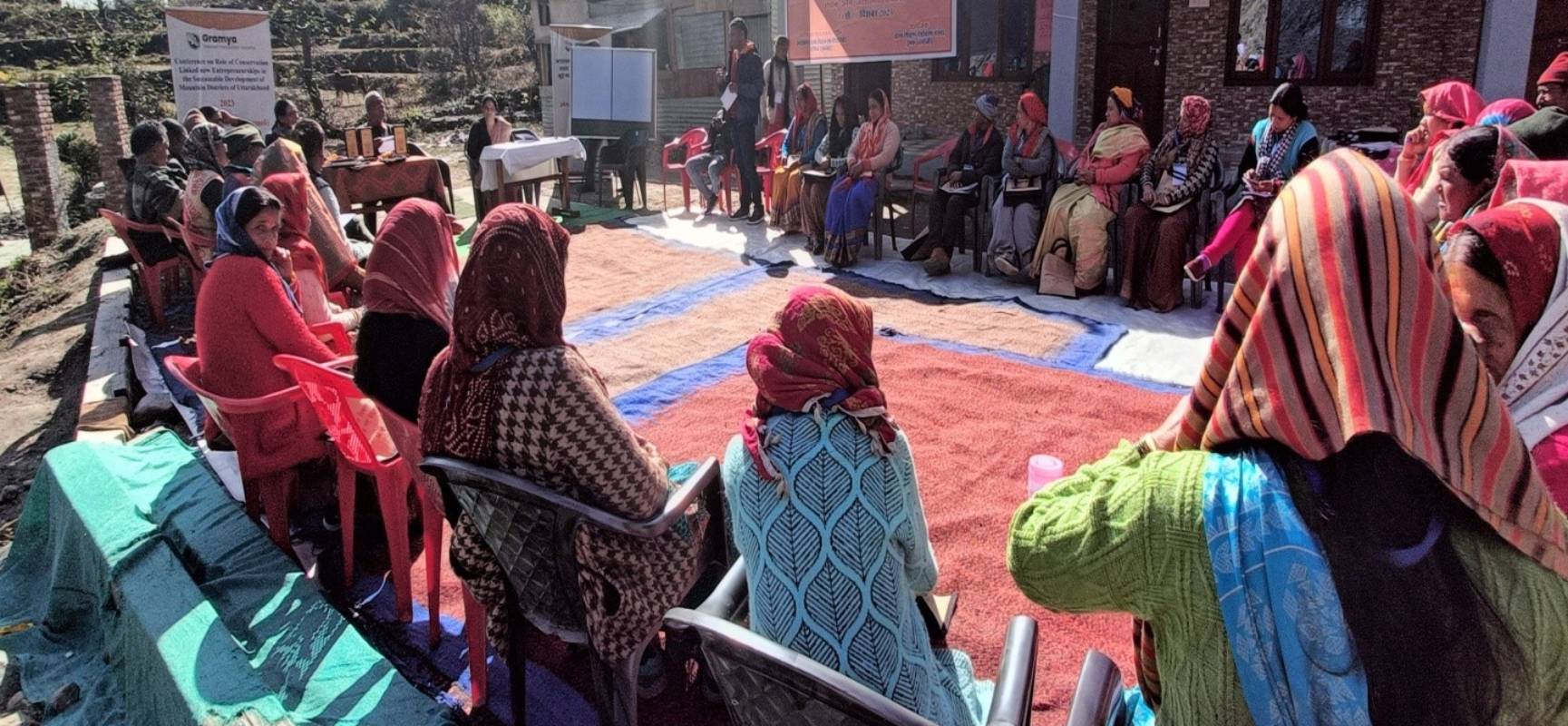
The second session of the day under the theme of ‘Conservation Responsibilities and Value Added Livelihoods’ was conducted by Mr. Laxman Negi, Secretary, JANDESH. In his presentation, Mr. Negi explained the prevalent tourism practices in Uttarakhand and how it is adversely affecting local ecology. He argued that irresponsible behavior of tourism and unregulated inflow is highly damaging and leaves an irreparable impact especially in high altitudes. He further argued that the economic contribution of the tourism sector in Uttarakhand is negligible despite the fact that about 50% of tourists in the Indian Himalayan region visit Uttarakhand.
Talking about solutions, he advocated for premium and high end tourism in Uttarakhand. He argued that this tourism will enhance our economy substantially and also reduce pressure on natural wealth significantly. He further stated that currently tourism is operated without understanding the carrying capacity of the local landscape. Innovation in tourism is required by identifying unique and interesting tracks, landscape and natural beauty to attract premium tourists.
Mr. Negi also argued that homestays are a good way to enhance the rural economy. However, he cautioned that we must not dilute the idea of homestay with commercial hotels. Homestay idea brings cultural aspects in tourism. And premium tourists are more interested in culture along with landscape. We can greatly benefit from blessed natural wealth and deep rooted cultural practices.
Ms. Prabha Rawat, President of Gramya Sikshan Paryavaran Sanstha Ms. Susheela Bhatt, Principal, Subodh Prem Vidya Mandir, Gopeshwar participated as discussant in these two sessions. Ms. Rawat argued that high end tourism needs to be promoted to have tourism in a sustainable manner. Further, the local culture must be harnessed to make tourism more interesting, attractive and profitable. Ms. Bhatt argued that co-benefiting entrepreneurs such as fruit processing, restoration of dumping grounds and natural oil extractions must be promoted in the highly fragile Himalayan region.
Enterprising Traditional Apiculture
The third day of the workshop started with continuation of theme Conservation Responsibilities and Value Added Livelihoods. Under this theme the first session was delivered by Mr. Prakash Panwar, an entrepreneur. Mr. Panwar shared his experience of learning bee keeping and transforming it into a micro entrepreneur. He stated that his encounter with honey bees was random, when he observed people collecting honey through traditional methods. It instigated him to inquire more about it and find ways to adopt it as a source of income. His quest to learn about honey bees exposed him to learn about various species of honey bees, their culture, colony, honey production and honey harvesting.
Mr. Panwar further added that he realized that boxed beekeeping promoted through various schemes are not successful at micro level, as they can be easily eaten up by wild animals. For boxed beekeeping one needs better protection and guarding of honey bee boxes. He motivated participants to continue with wall beekeeping, which is traditional practice in Uttarakhand. However, he motivated people to use modern tools and techniques to effectively harvest honey, protect honey bees and process honey as per market demand.
Carbon Sequestration and Trading of Credits
The second session under this theme on the third day of the workshop was conducted by Mr. Jeet Singh, Head of Research, RGICS. His presentation was on the concept of carbon credit, Indian policy mechanism to yield benefits of carbon credits and opportunities for Himalayan farmers and entrepreneurs. He stated that the idea of carbon credit has dual benefits as it improves the local ecology which helps in sequestration of higher amounts of carbon. On the other hand, the additional amount of sequestrated carbon can be sold in national and international markets at a very high price.
Mr. Singh stated that the government of India has recently introduced the Carbon Credit Trading Scheme and also drafted the Green Credit Scheme guidelines. Farmers can use the Green Credit Scheme to sell green credit earned by plantation, water harvesting, organic farming and other environmentally friendly activities.
Mr. Mohan Negi, Block Mission Manager, NRLM and Entrepreneur Mr. Sidhant Arora participated as a discussant in this session. Mohan Negi argued that honey is a premium product if it is harvested and processed well. He further argued that marketing, packaging and branding is required to sell honey of the region in the premium market.
Mr. Arora stated that entrepreneurs change with time. Carbon sequestration is a global demand, but it can provide opportunities for micro entrepreneurs to benefit from it by restoring his or her own agriculture land and forest. More information and systemic support is needed to facilitate entrepreneurs to take up twenty first century businesses.
Accessibility of Technology and Techniques to Entrepreneurs
Entrepreneurs participating in the workshop were divided in five sub-groups based on their enterprise and enterprising interests namely millet processing, dairy, mushroom cultivation, poultry and organic farming. These groups were further asked to discuss in groups, share their experiences, technology, science and techniques to enrich understanding of each one of them. They were further asked to discuss technological advancement and techniques required for the growth of their enterprises.
The group on millet processing summarized their discussion and informed the larger group that technologies for milling of local millets such as Jhangora, Kauni and Koda are not well developed. It takes a lot of time and energy to mill these millets. The over consumption of milling of these millets increases the input cost leading to low profit.
The group on dairy informed that most people have one or two cows and produce very limited milk. However, most people are unaware about cow rearing, selection of fodder, selection of cow species and feeding techniques. Group highlighted the requirement of better draining to make dairy a high profit business.
Mushroom cultivation was smaller, as very few of them were involved in mushroom cultivation. These participants informed that the local demand for Mushrooms is very high; however, they don’t have enough space and resources to cultivate Mushrooms in large quantities.
The poultry group informed the larger group that it can be a very profitable business if we can reduce the input cost by having a local hatchery. Currently, poultry farmers are dependent on hatchery located in Saharanpur and Punjab. The transportation all the way to Chamoli increases the input cost.
The final group on organic farming stated that, despite having a certificate of organic production, they don’t have access to a suitable market, where it can be sold at premium prices. This group demanded the need for a market mechanism for locally produced certified organic products.
Major Takeaways and Recommendations
Policy and Programs: Resource persons and participants of the workshop highlighted issues related to shortage of infrastructural and institutional mechanism in mountain district of Uttarakhand to develop enterprising mindset and enterprising culture. Moreover, they also stress on effective implementation of schemes and programs of the government to promote entrepreneurships in the region.
Promotion of New and Innovative Entrepreneurships: New and innovative enterprising sectors may be promoted in mountain districts such as clean energy, green credit and information technology.
Market Preference: Social and ecological entrepreneurs in mountain districts with limited resources can grow by tapping the high end and premium market, for example, high end tourist and premium organic consumers.
Appropriate Technology: More regionally appropriate technological advancement is required to process and value addition of local resources such as millets, sweet orange, lantana, grains and fruits.
Reduction of dependency on out of state inputs: Reducing dependency for fodder, feed and hatchery increases input cost of enterprises related to dairy, fisheries and poultry. Local hatchery and fodder production units can be developed to boost micro enterprises in the region.
Trainings Requirement: There is huge demand for training especially in the dairy sector. Micro entrepreneurs participating in our workshop feel that in the absence of proper training their dairy business is less profitable.
Incentive of Eco-Friendly Businesses: Special incentives may be provided to conservation-linked entrepreneurs in mountain districts of Uttarakhand as they are solving social and economic problems at the local level and ecological problems at the global level.

